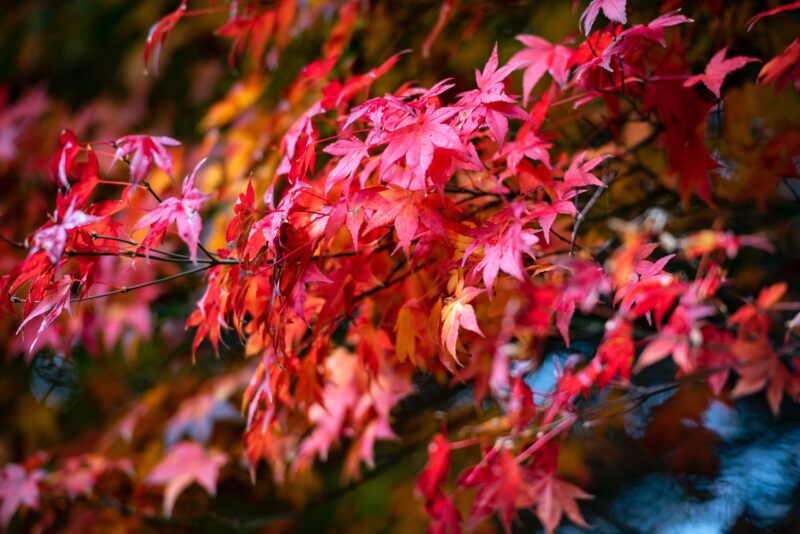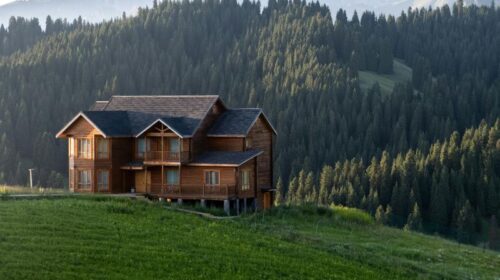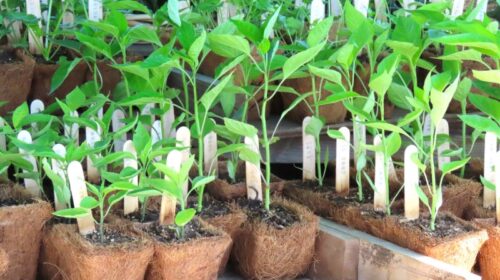The Warm Colors of Fall
By Josh Reilly
In September, rains brought a flush of Summery green back to our hillsides. Since then, however, with warm dry air and cool evenings, leaves are turning shades of gold, yellow, wine red, cranberry, and strawberry jam. East and West Zayante Roads are great places to see the seasons change, but you probably have your own favorite spots. Oaks, sycamores, locust trees, dogwoods, madrones, and street trees like Liquidambar are suddenly alight with hot color and cool patches of bare bark. Even the Ponderosa pines are suddenly filled with golden brown needles, ready to fly with the next breeze. Tree squirrels are practically apoplectic at this time of year, running madly up and back, jaws full of bounty and pausing only to chatter and scold nearby jays, crows, and skulking predators, waiting for the chance at a furry Fall feast.
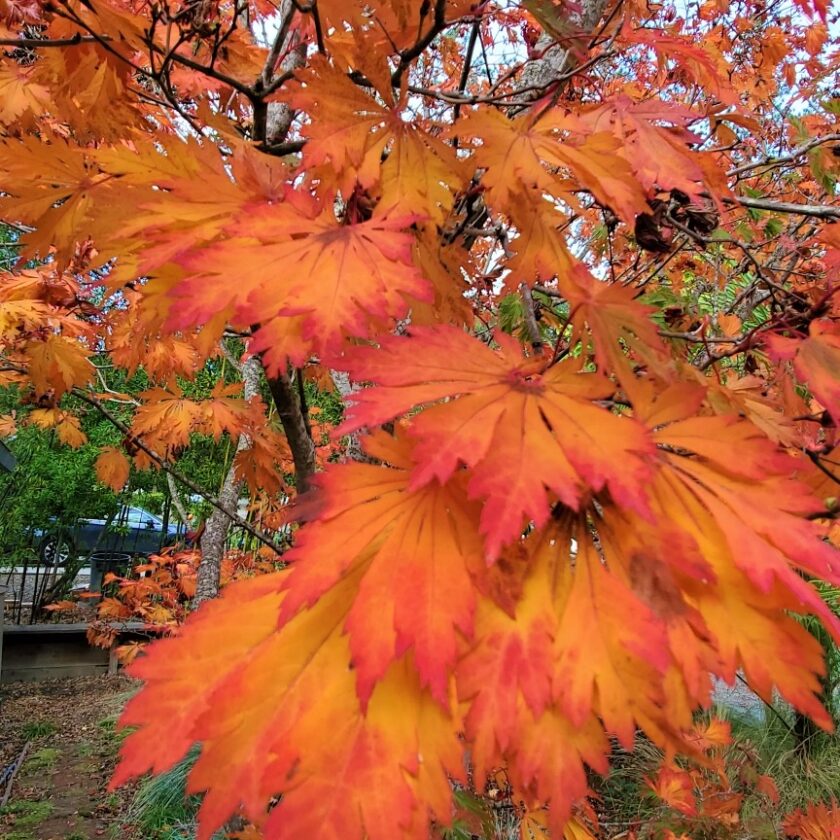
Japanese Maple, Acer palmatum, Sapindaceae | Photo by Josh Reilly 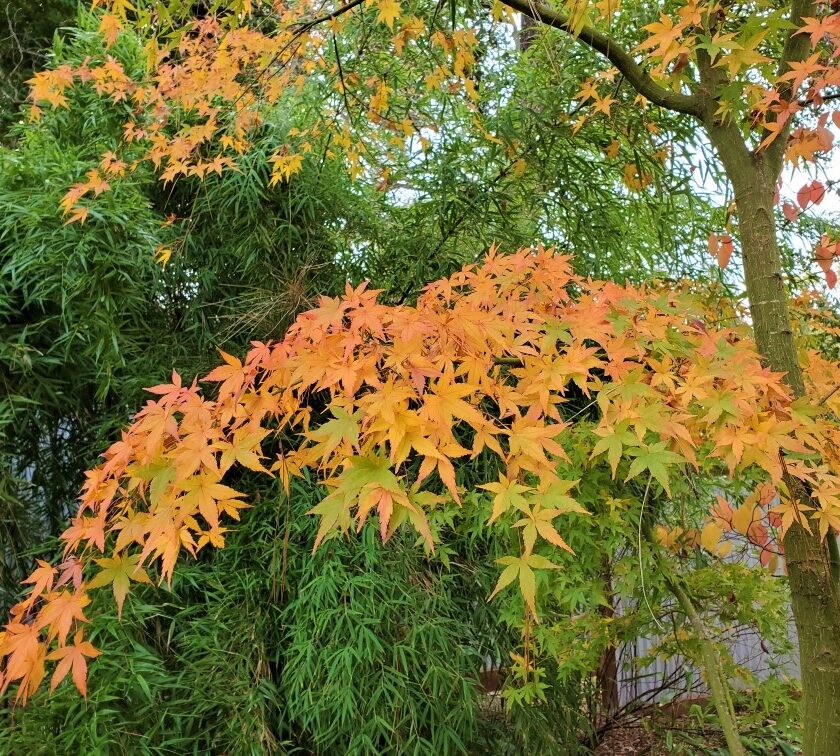
Japanese Maple, Acer palmatum, Sapindaceae | Photo by Josh Reilly
Japanese Maples shine in November. Visit Hakone Gardens at 21000 Highway 9 in Saratoga to see what these beauties can do for the landscape. I have two species of Japanese Maples (Acer palmatum) and two “threadleaf” cultivars, a mature 18-foot specimen the previous owner planted and a “Crimson Queen,” a purple-leaved “weeping” dwarf variety. All are in full Fall color now. These small, hardy trees demand little and give much. The vigorous Japanese Maple benefits from some Summer pruning almost every year. Pruning helps tree shape, allows light into the understory, and exposes elegant limbs with smooth bark — vivid green when wet — not unlike a tropical lizard’s scales. Some brightly colored and variegated cultivars may revert to green over time. Originally propagated from shoots having color mutations (called “Sports”), the cultivar still has the species DNA. Vigorous green shoots may eventually crowd out those with warm colored and variegated leaves. High soil nitrogen (relative to phosphorus and potassium) or deeper shade may also cause warm colors and variegation to fade. Many fade to green every Summer. Fear not. This doesn’t prevent a bold display of warm color in Fall. Pruning out green shoots, reducing nitrogen fertilizer, and pruning nearby plants to increase sun exposure all may help to maintain the unique dark reds and purples.
Like every other living thing, all those leaves will return to Mother Earth. Where they belong! Don’t throw them out. These leaves are a superb, 100% free soil amendment. Left in place, those fallen leaves become food for earthworms and soil microbes, improving soil tilth and nutrition. While being thus consumed, slowly, over the Winter, they protect the soil from exposure to pounding rain, high wind, frost, and dry air. They provide a habitat for a large community of insects, including endangered native bees, and along with conifer needles, harborage for frogs, salamanders, and our own beloved banana slugs.
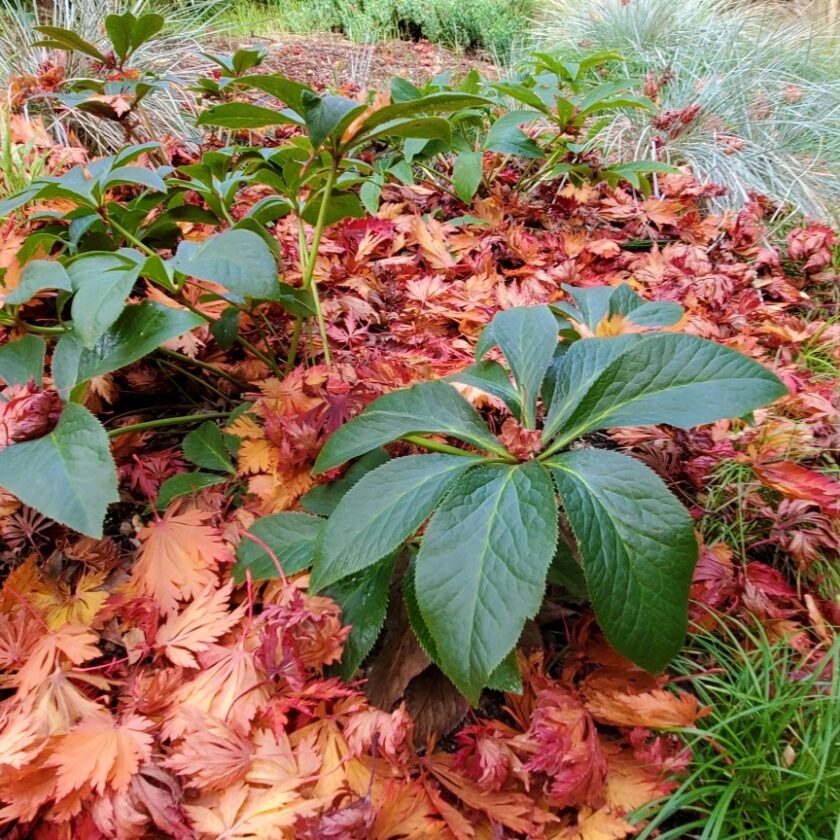
I get it, though. The leaves pile up, smothering the tidy, graceful landscape you have struggled mightily to create. And wet leaves (especially slimy Maple and Liquidambar) make your stone or brick paths hazardously slippery. So, I don’t leave all of them where they fall. I blow off my stone and brick paths several times each Winter. I rake some leaf litter out from under the trees and shrubs every few years. Some goes right into my compost, some can be layered over exposed soil six inches deep to suppress invasive Winter weeds. By Spring, the leaves have dried and crumbled and it’s easy to rake them up and throw them into the compost. Or put your leaves in the green barrel. The County will do the composting without your having to raise a pinky.
Josh Reilly, aka Uncle Skip, writes about seasonal gardening from his home in beautiful Ben Lomond, California.
Featured photo by William Milliot: Japanese Maple Acer palmatum. The Japanese name for this beautiful tree is Momiji.

